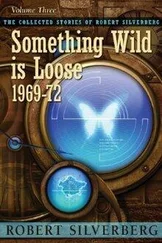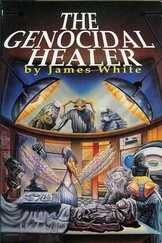Project Itoh - Genocidal Organ
Здесь есть возможность читать онлайн «Project Itoh - Genocidal Organ» весь текст электронной книги совершенно бесплатно (целиком полную версию без сокращений). В некоторых случаях можно слушать аудио, скачать через торрент в формате fb2 и присутствует краткое содержание. Год выпуска: 2012, ISBN: 2012, Издательство: Haikasoru/VIZ Media, Жанр: Старинная литература, на английском языке. Описание произведения, (предисловие) а так же отзывы посетителей доступны на портале библиотеки ЛибКат.
- Название:Genocidal Organ
- Автор:
- Издательство:Haikasoru/VIZ Media
- Жанр:
- Год:2012
- ISBN:9781421550886
- Рейтинг книги:4 / 5. Голосов: 1
-
Избранное:Добавить в избранное
- Отзывы:
-
Ваша оценка:
- 80
- 1
- 2
- 3
- 4
- 5
Genocidal Organ: краткое содержание, описание и аннотация
Предлагаем к чтению аннотацию, описание, краткое содержание или предисловие (зависит от того, что написал сам автор книги «Genocidal Organ»). Если вы не нашли необходимую информацию о книге — напишите в комментариях, мы постараемся отыскать её.
Genocidal Organ — читать онлайн бесплатно полную книгу (весь текст) целиком
Ниже представлен текст книги, разбитый по страницам. Система сохранения места последней прочитанной страницы, позволяет с удобством читать онлайн бесплатно книгу «Genocidal Organ», без необходимости каждый раз заново искать на чём Вы остановились. Поставьте закладку, и сможете в любой момент перейти на страницу, на которой закончили чтение.
Интервал:
Закладка:
3
The world changed the day the bomb exploded in Sarajevo.
The era of Hiroshima was brought to a close once and for all. All around the world the military suddenly started waking up to the fact that their theoretical weapons of mutually assured destruction were maybe not so theoretical after all. Nuclear weapons were back on the table as an option.
During the Cold War, nuclear weapons were the ultimate symbol of the eschaton. If the USSR and the USA went nuclear on each other, then a giant radiation cloud was sure to form a canopy in the skies that would herald an eternal nuclear winter. Humanity would perish. Nuclear war was to be avoided at all costs, and indeed, it had been avoided. Because people believed in the myth of nuclear apocalypse.
But that myth was exposed at Sarajevo.
A huge number of people died. Even so, military establishments around the world saw it as a “controlled” explosion. The casualties were confined to the target area. When politicians and generals around the world looked at the crater in the ground created by an improvised nuclear bomb, they realized that nuclear weapons might have their uses after all.
That was why, when India and Pakistan finally pulled the nuclear trigger on each other, the rest of the world wasn’t overly concerned. It was, of course, a dreadful event, and one that shouldn’t have happened.
But it was neither the end of everything nor the beginning of anything.
The world had already experienced Sarajevo after all.
We had become accustomed to people dying in large numbers.

Here, there was a smell.
A smell to stick in your craw. A smell that made you think that humans really were no more than beasts. Yes, India smelled all right. It smelled of poverty and sacred cows and feral dogs and shit and piss. It smelled of the pungent spices used in the preparation of every meal. It smelled of men, and it smelled of women.
And, of course, where it smelled of life, it also smelled of death in equal measure.
It was pervasive. The air even penetrated into our base.
We arrived at our Mumbai base ahead of our equipment and waited for the cargo shipment containing it to follow us. It was still on the outskirts of Mumbai, in the form of giant crates full of support equipment and Eugene & Krupps–branded weaponry, stewing in the hot air, waiting to be processed so that we could take delivery.
We had started to become accustomed to the oppressive heat and humidity. We spent our time at base camp reviewing the battle plan while we waited patiently for intel from our agents in the field. As soon as we had the tip-off, we would be bundled into our Intruder Pods and launched toward our target destination, and as soon as we captured our targets we would hightail it out of there in unmanned helicopters back to the nearest local base. Then, once everything was secure, we would escort our prisoners back to Mumbai by train.
It was a flawless plan. Of course, for a plan to work, things had to go according to it.
We headed out into the city once known as Bombay to acclimatize ourselves to our surroundings. New Delhi and Kolkata had been incinerated in nuclear infernos and were now somewhere at the bottom of giant craters. Mumbai had miraculously survived the nuclear exchanges of the war and so had naturally become a magnet for refugees from the rest of the country. Eugene & Krupps, the UN, and various NGOs all stationed their headquarters here for the postwar reconstruction effort, in this city that had once been the heartland of India’s awesome computer industry.
As we walked through the city we came across a Eugene & Krupps armored vehicle that had come to a standstill amid an ocean of people. It was a Stryker, probably US Army surplus, and its path was currently blocked by a herd of holy cows that was ambling across the road at a snail’s pace. On top of the vehicle stood a number of E&K PMC soldiers clad in Blackhawk Commando Chest Harnesses. They had guns dangling by their sides in holsters, and one of them drew a pack of smokes from one of the many pouches velcroed to his harness. He lit up a cigarette, blowing the smoke irritably into the crowd. Some jokers had evidently decided to take advantage of the standstill to cover the olive drab Stryker in bright pink stickers of Ganesha, which made the normally imposing armored vehicle look somewhat kitsch.
You could buy sacred icons on every street corner of this city, from the old-fashioned portraits and dolls to garish stickers and Mob straps. Shiva, Ganesha, Hanuman, and pretty much any other deity who took your fancy. All shapes and sizes, every possible permutation of god and consumer good you could possibly want, and then some.
Amid all this, Eugene & Krupps made its presence felt.
There were enough sentries to man virtually every intersection. There were probably more soldiers than police in this city by the looks of it, and each one wore his own interpretation of the uniform. Some had full protective gear, others just caps, and others wore nothing at all on their heads. There didn’t even seem to be any regulation-issue firearms—I even saw one middle-aged dude with an old-style Colt revolver. Talk about a cobbled-together single-action army. The silver-haired dandy glared back at us. I guess he could tell from the way we walked that we were in the same profession as him.
In contrast to the sentries who patrolled on foot, the men sitting on the Stryker were in coordinated uniform. They were disciplined enough to have passed for a national army. I figured these were probably the ex-Special Forces that Erica Sales woman had been talking about back in the conference room at the Pentagon.
Eugene & Krupps weren’t the only private contractors involved in India’s postwar reconstruction efforts, of course. The prisons for war criminals were run by the Dutch private security company Panopticon, and our very own good old Halliburton were tasked with public works.
Eugene & Krupps might have sounded vaguely middle-European in origin, but it was more or less an American company these days—over seventy percent of its stock was owned by US corporations, and most of its management ranks were staffed by Americans. I’d heard that there were even a couple of US senators on its board of directors.
In other words, the US was not a signatory to the Rome Statutes—and so couldn’t officially be directly involved in the postwar reconstruction—but could still exert its influence in more subtle ways through companies such as Eugene & Krupps. The US didn’t have to send in its ground troops in order to have a military presence. UNOIND might have tasked Japan with the postwar reconstruction and security of India, and Japan in turn tasked Eugene & Krupps as her proxy, but the US had ways of pulling strings behind the scenes.
The interesting thing, though, was that this powerful Eugene & Krupps had the direct backing of the Japanese government and the indirect support of the US and yet were still wary of the Hindu India forces. That gave us an idea of the odds we were up against.
Hindu fundamentalism. Caste discrimination had officially been made illegal long before the war. On paper at least. But centuries of entrenched social order can’t simply be legislated away overnight. The history of India was the caste system. All countries have their own forms of discrimination surreptitiously built into their national psyche, and India was no exception. That was why Hindu India had been able to survive. And it was why they were now able to thrive.
We arrived at a riverbank and found ourselves in the middle of a giant shantytown of a slum. Rows of corrugated iron roofs ran along either bank, making the river itself seem like a blood vessel flanked by vascular walls of makeshift housing.
Читать дальшеИнтервал:
Закладка:
Похожие книги на «Genocidal Organ»
Представляем Вашему вниманию похожие книги на «Genocidal Organ» списком для выбора. Мы отобрали схожую по названию и смыслу литературу в надежде предоставить читателям больше вариантов отыскать новые, интересные, ещё непрочитанные произведения.
Обсуждение, отзывы о книге «Genocidal Organ» и просто собственные мнения читателей. Оставьте ваши комментарии, напишите, что Вы думаете о произведении, его смысле или главных героях. Укажите что конкретно понравилось, а что нет, и почему Вы так считаете.












